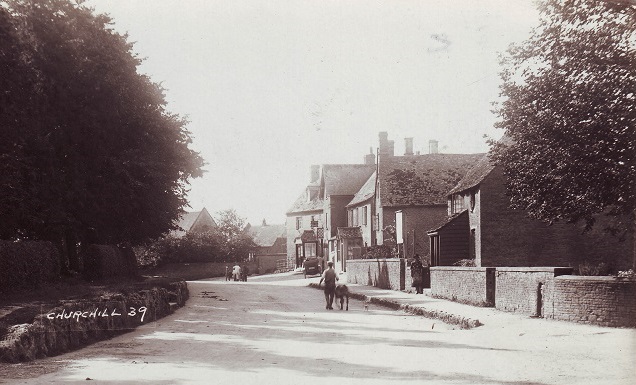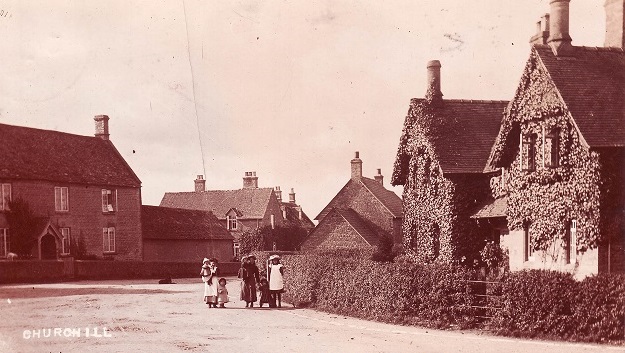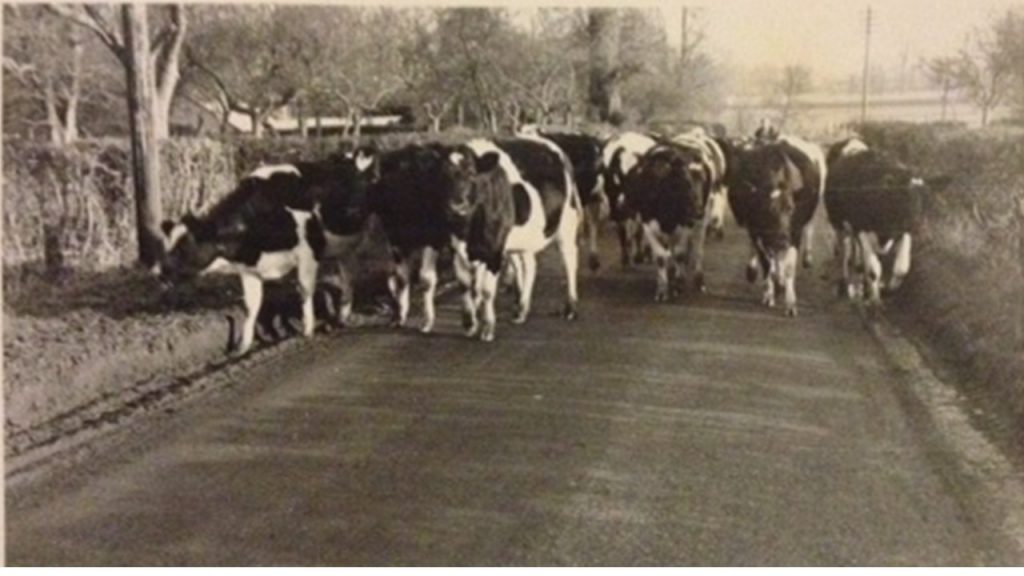A Guest Article from Churchill Village
From time to time, we welcome guest contributions from villages local to the Wychwoods. This article comes courtesy of the Churchill and Sarsden Heritage Centre, the small and unique museum in Churchill Village which celebrates the lives of two of its famous sons: Warren Hastings, the first Governor General of India, and William Smith, famous as the “Father of English Geology”. The Heritage Centre is known to most members of the Wychwoods Local History Society, and especially through a talk given to the group in January 2017 on WIlliam Smith by Owen Green.
***************

In April 2008, Churchill village lost one of its best-loved residents, David Crudge, who had been born in the village in 1920 and at the time of his death, had been its longest resident.
A farmer, David was interested in all farming and rural activities, in particular a project begun many years earlier by his father in establishing the pedigree herd of dairy shorthorn cattle, which he was proud to exhibit at local and regional agricultural shows.
David was a fount of knowledge about village history too, and regularly wrote in the Churchill newsletter, Roundabout. Here are two of his reminiscences of life in and around the village.

David Crudge Remembers: February 1999
Much has changed since local historian Arthur Ward wrote in the 1930s, ‘In practically all the villages in this part of the country, agriculture has been for centuries, and still is, the most important industry and the main source of the livelihood of the bulk of the population.’
Until the end of the 18th century, the landscape was quite different: large open spaces with the arable land cultivated in strips and the stock grazing common land. Our enclosures in 1788 saw the beginnings of fields as we now know them and some still have the names they were given then. Many were obvious choices: ‘Mountfield’, ‘Longround’ and ‘Brookside’, and a glance at the map explains why another is called ‘Crooked Elbow’.
Other interesting names are ‘Challenge’, ‘Hangings’ and ‘Childrens’, while the cow fields behind The Chequers were originally Upper and Lower ‘Football’. Even stranger, Mr Loehnis’ land down Sarsden Road was known as ‘Mouse Pit Ground’ and Sarsden still has a ‘Beggar’s Piece’ and a ‘Witney Gate’.
My favourite is a very small field on The Grange, adjoining the old farm yard, known as ‘Lampacre’. Only in recent years have I found out how it got its name. With very few buildings available then, many animals needing attention during the night – cows due to calve, sheep to lamb or perhaps mares to foal and sick animals – would be put in there before dusk. The farmer could then walk round after dark with his ‘lamp’ – most likely a paraffin lantern, and would soon find and attend to them.
David Crudge Remembers: March 2002
Now that the cattle have gone from the village, I sometimes think back to the 1920s when I was a boy and would walk to school past the busy blacksmith’s shop (now the Forge Guesthouse), the thriving shop and post office and The Chequers, which was then a farm as well as a pub. Jesse Barrett the farmer/landlord walked his cows there twice a day from his grass fields down Kingham Road up through the village to be milked.

There were 4 farms actually in the village and they, like the outlying ones, almost all had pigs, poultry, sheep and cattle as well as a dairy herd. Some 70 or more of the menfolk worked on the land or at the blacksmith’s. There were lots of children about then, the number attending school would be written each day on a blackboard and it would generally be over 90.
The schoolmaster, Mr Anson, was also the church organist and was a fine musician. His village choir won prizes at the local music festivals and his church choir was large and exceptionally good. Many of the village men were in it – the same men who during the week would be doing the ‘ploughing, sowing, reaping and mowing’ and of course milking the cows by hand (milking machines didn’t arrive here till the mid-1930s). The Mount Farm had the largest herd and the most milkers, many of them good singers, so as they worked sitting on their 3-legged stools, they sang and they could be heard from the road.
The most distinguished herd was at Churchill Heath where they bred pedigree dairy shorthorns and owner, Mr Rose, was nationally famous as a judge of them. Mr Martin at Rynehill was a pioneer of clean milk production, while Churchill Farm in the village won the Shorthorn Society’s silver medal for the highest herd average in the county for three consecutive years – one year it was the second highest in the country.
Cows were allowed or even encouraged to eat the grass on the sides of the road and every village garden had a gate, which was kept closed or they would help themselves to the vegetables. It was a different world then; I’m not saying it was better or worse – but shoes certainly needed cleaning a lot more often!

